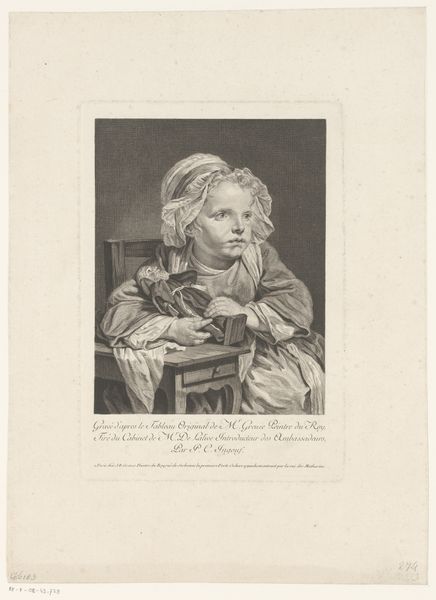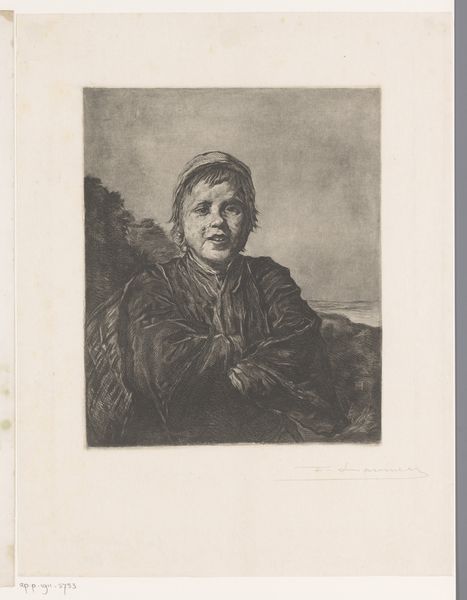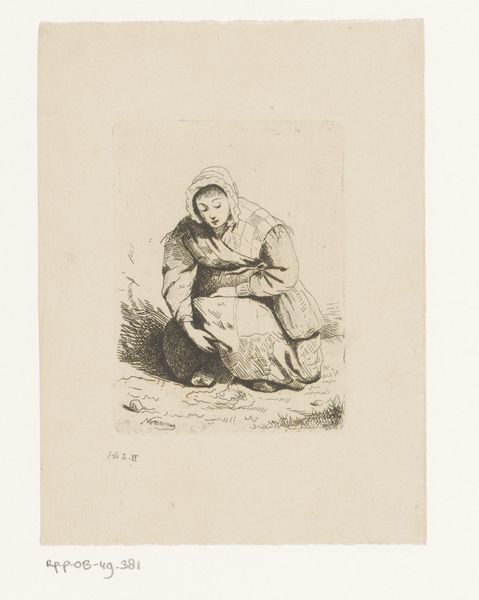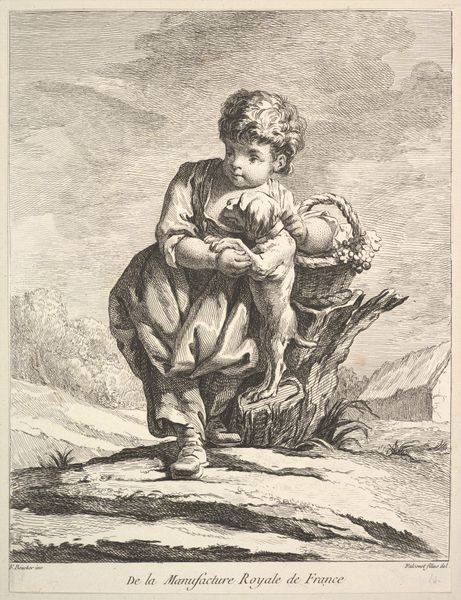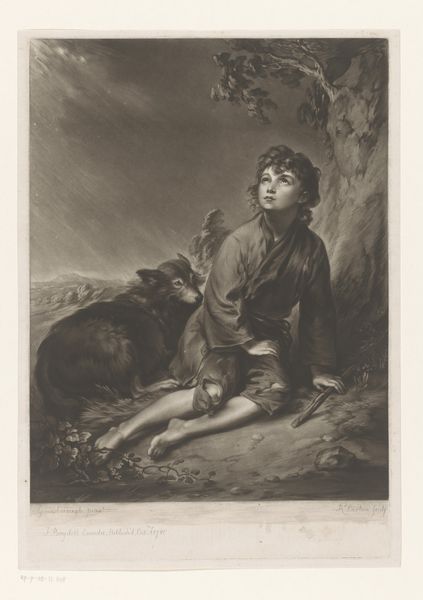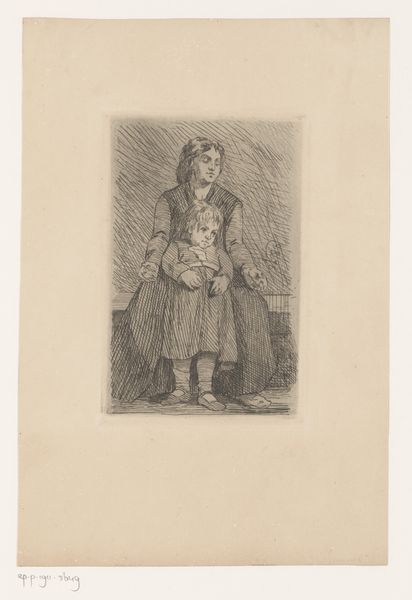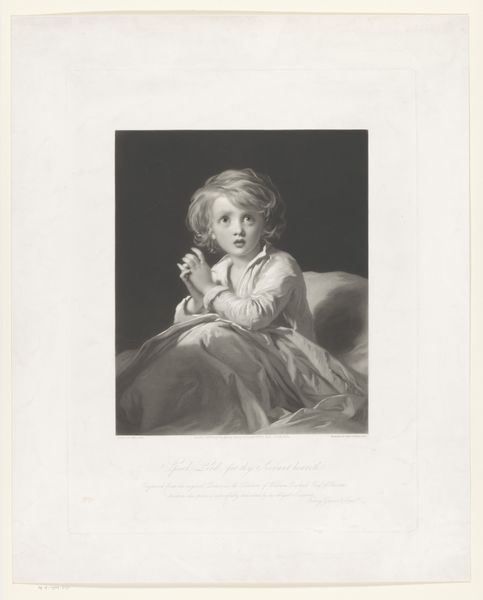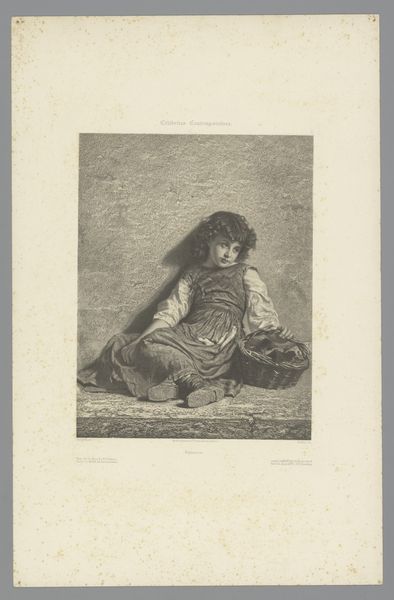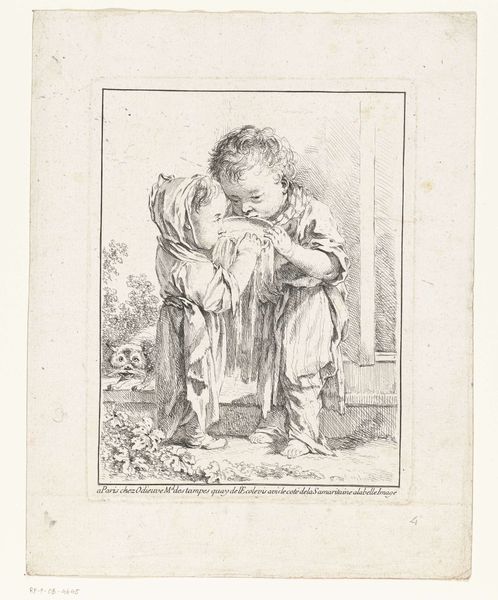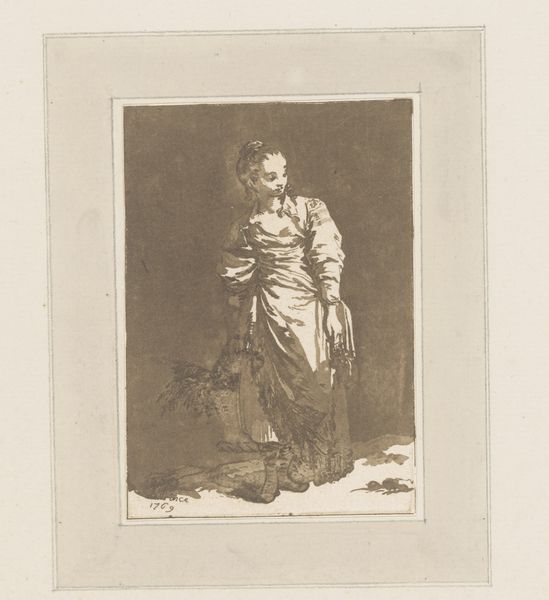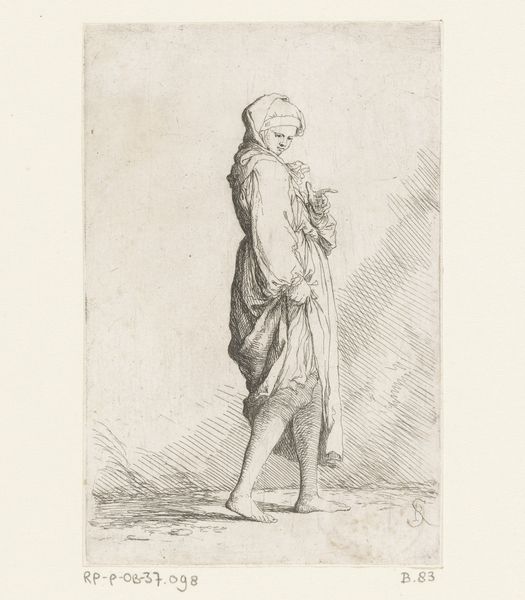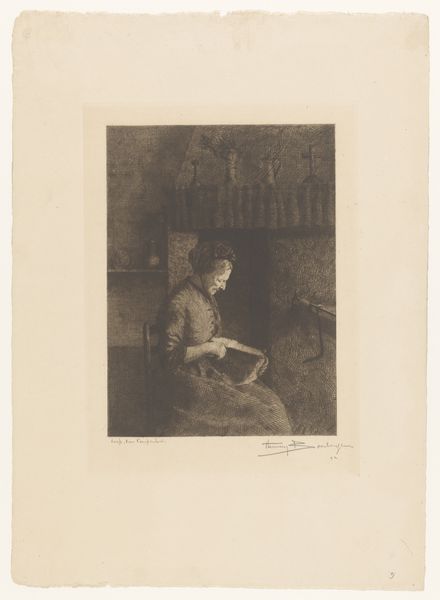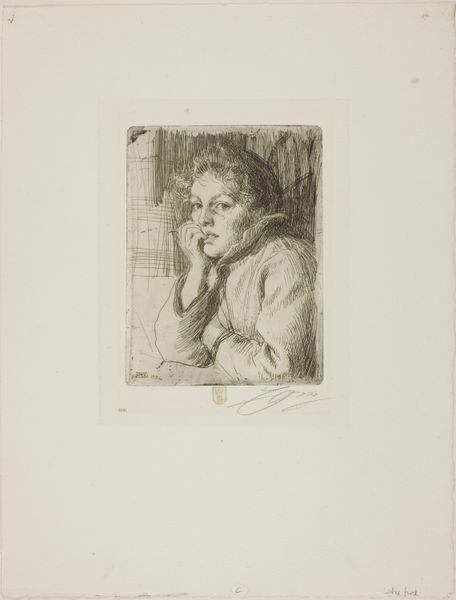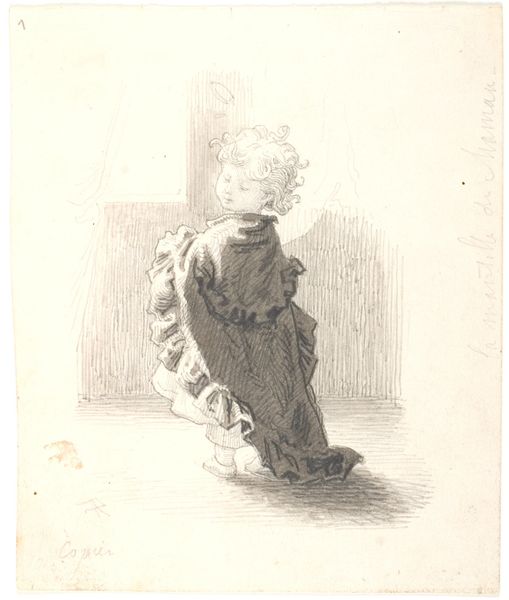
The dwarf Francisco Lezcano, called 'El Niño de Vallecas', after Velázquez 1792
0:00
0:00
Dimensions: Sheet: 30 3/8 × 21 11/16 in. (77.1 × 55.1 cm) Plate: 17 5/8 × 14 in. (44.8 × 35.5 cm)
Copyright: Public Domain
Bartolomé Vázquez created this etching of 'The dwarf Francisco Lezcano, called 'El Niño de Vallecas', after Velázquez' sometime around the late 18th century. Vázquez’s print reproduces a portrait by Diego Velázquez, court painter to King Philip IV of Spain. The original painting was produced in the 1640s, at a time when it was common for European courts to employ people with dwarfism. These individuals were often paraded as objects of amusement, yet Velázquez’s painting has been seen as a more dignified representation of the sitter. Vázquez's print comes later, a product of the enlightened reformism of the later 1700s. By making prints such as this one, royal collections and paintings could become more widely known. Yet, how might the print mediate the way we see the original? To truly understand this image, we must consider how institutions like the Spanish royal court and later the Museo del Prado shaped the production and reception of such works. Through archival research and careful formal analysis, we can understand the complex social and political forces that gave rise to artworks such as this.
Comments
No comments
Be the first to comment and join the conversation on the ultimate creative platform.
